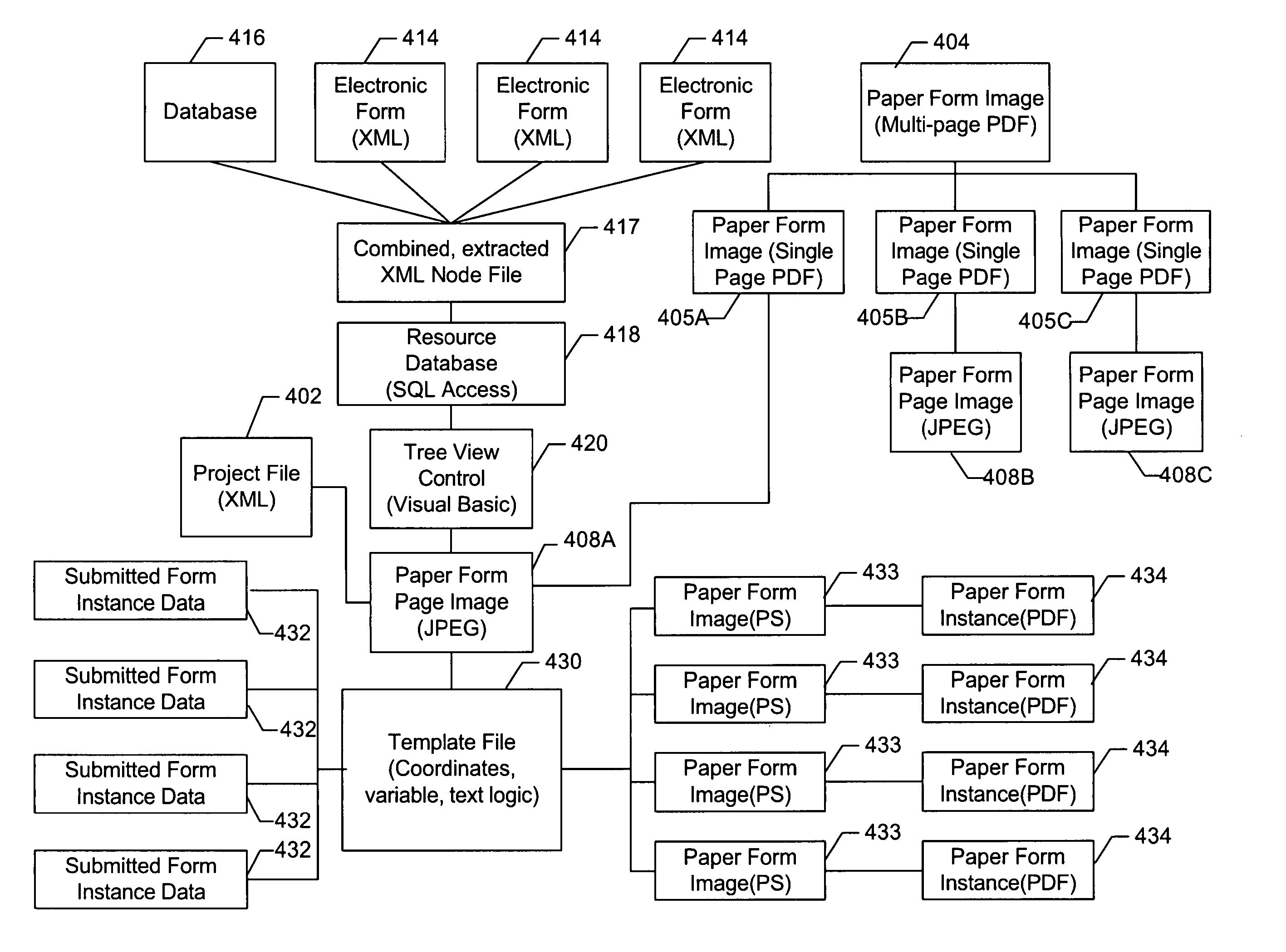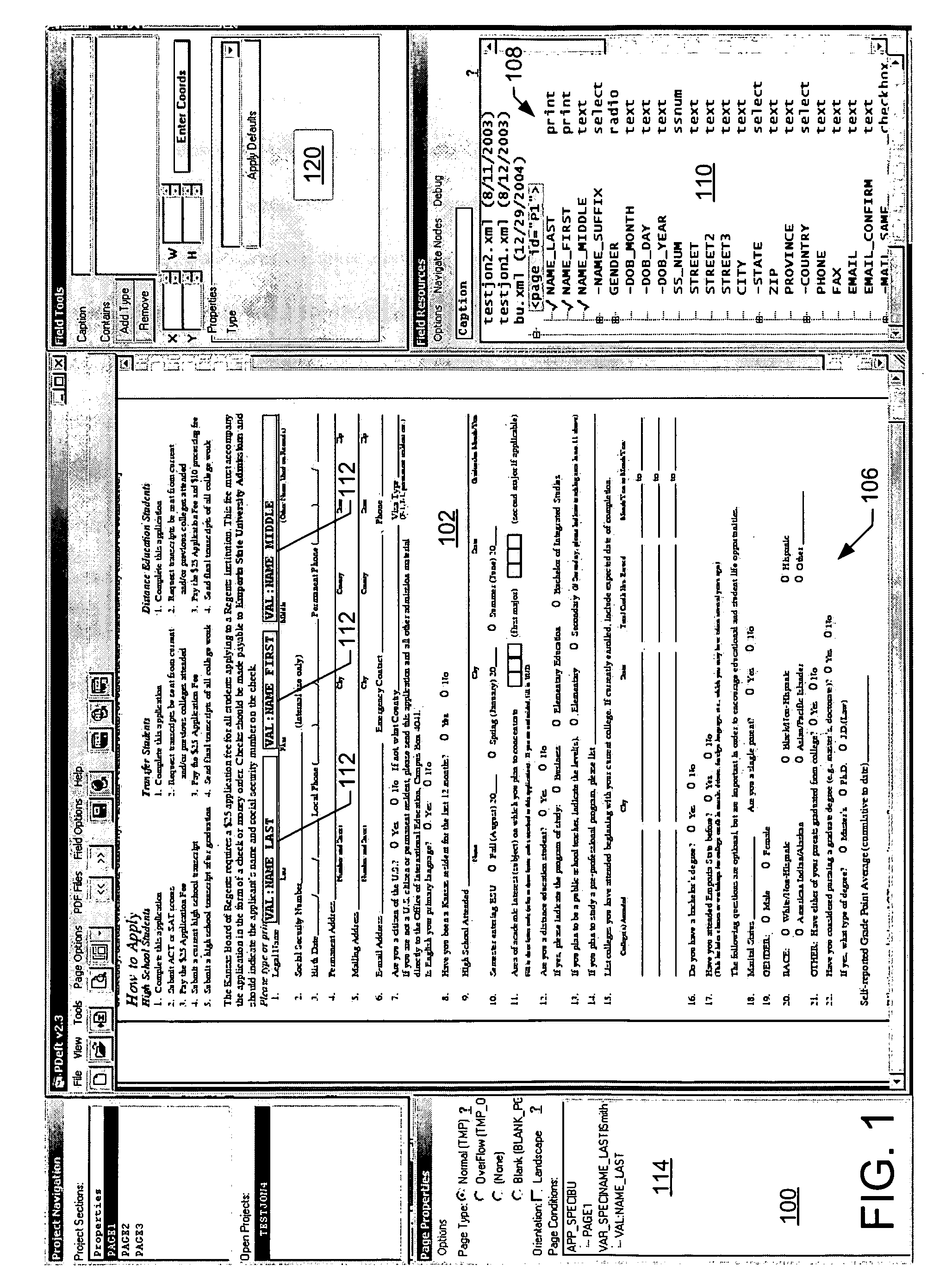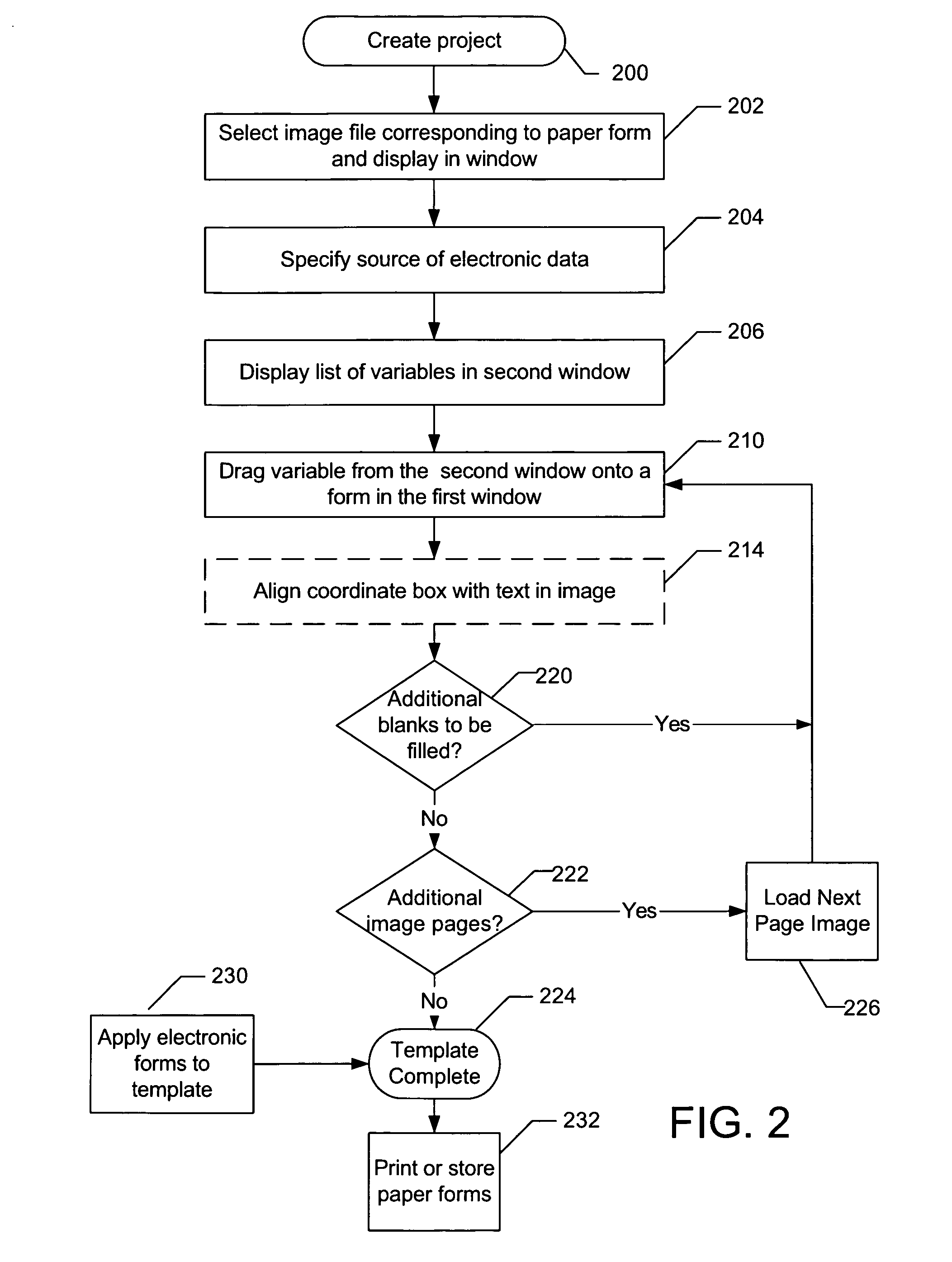System for describing the overlaying of electronic data onto an electronic image
a technology of electronic data and overlaying, applied in the field of combining electronic data and electronic images, can solve the problems of time-consuming and skilled programmer, complicating the process of creating paper forms from electronic forms, and less useful electronic images of completed paper forms, etc., to facilitate the merging of instances of electronic data
- Summary
- Abstract
- Description
- Claims
- Application Information
AI Technical Summary
Benefits of technology
Problems solved by technology
Method used
Image
Examples
Embodiment Construction
[0024] The system can be used to map electronic form description data onto a paper form or other image. It can be used, for example, to create a template for the purpose of printing electronic forms that look like an original paper form, or simply to enhance the appearance of the printouts of electronic forms. The invention allows an institution to obtain the benefits of electronic forms, while also providing the benefits of paper forms.
[0025] In accordance with a preferred embodiment of the invention, a user can create a template for creating instances of paper forms from instances of electronic forms. The system extracts the variables from electronic forms (or other data source or combination of data sources) and provides a list of variables to the user. The user selects variables from the list, and drags and drops them onto an image of the paper form to create fields on the image. The user can also assign properties, operations, or logic to the fields. Once the template is compl...
PUM
 Login to View More
Login to View More Abstract
Description
Claims
Application Information
 Login to View More
Login to View More - R&D
- Intellectual Property
- Life Sciences
- Materials
- Tech Scout
- Unparalleled Data Quality
- Higher Quality Content
- 60% Fewer Hallucinations
Browse by: Latest US Patents, China's latest patents, Technical Efficacy Thesaurus, Application Domain, Technology Topic, Popular Technical Reports.
© 2025 PatSnap. All rights reserved.Legal|Privacy policy|Modern Slavery Act Transparency Statement|Sitemap|About US| Contact US: help@patsnap.com



